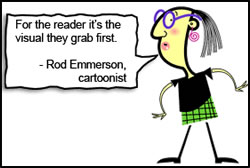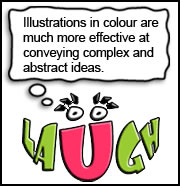Features of cartoons

Cartoons are created to convey messages about ideas and judgements that the cartoonist is making about people, events or institutions. The message may be light-hearted, humorous, mocking, savage or sympathetic.
Each cartoon has a number of visual and language features that create the overall impression and help to communicate the message. These include the use of symbols, colour, caricature and stereotypes.
Links
- http://lrrpublic.cli.det.nsw.edu.au/lrrSecure/Cli/Download.aspx?resID=9225&v=1&preview=true
- http://tlf.dlr.det.nsw.edu.au/learningobjects/Content/L2851/object/index.html
- http://tlf.dlr.det.nsw.edu.au/learningobjects/Content/L2852/object/index.html
- http://tlf.dlr.det.nsw.edu.au/learningobjects/Content/L2854/object/index.html
- http://tlf.dlr.det.nsw.edu.au/learningobjects/Content/L2853/object/index.html
